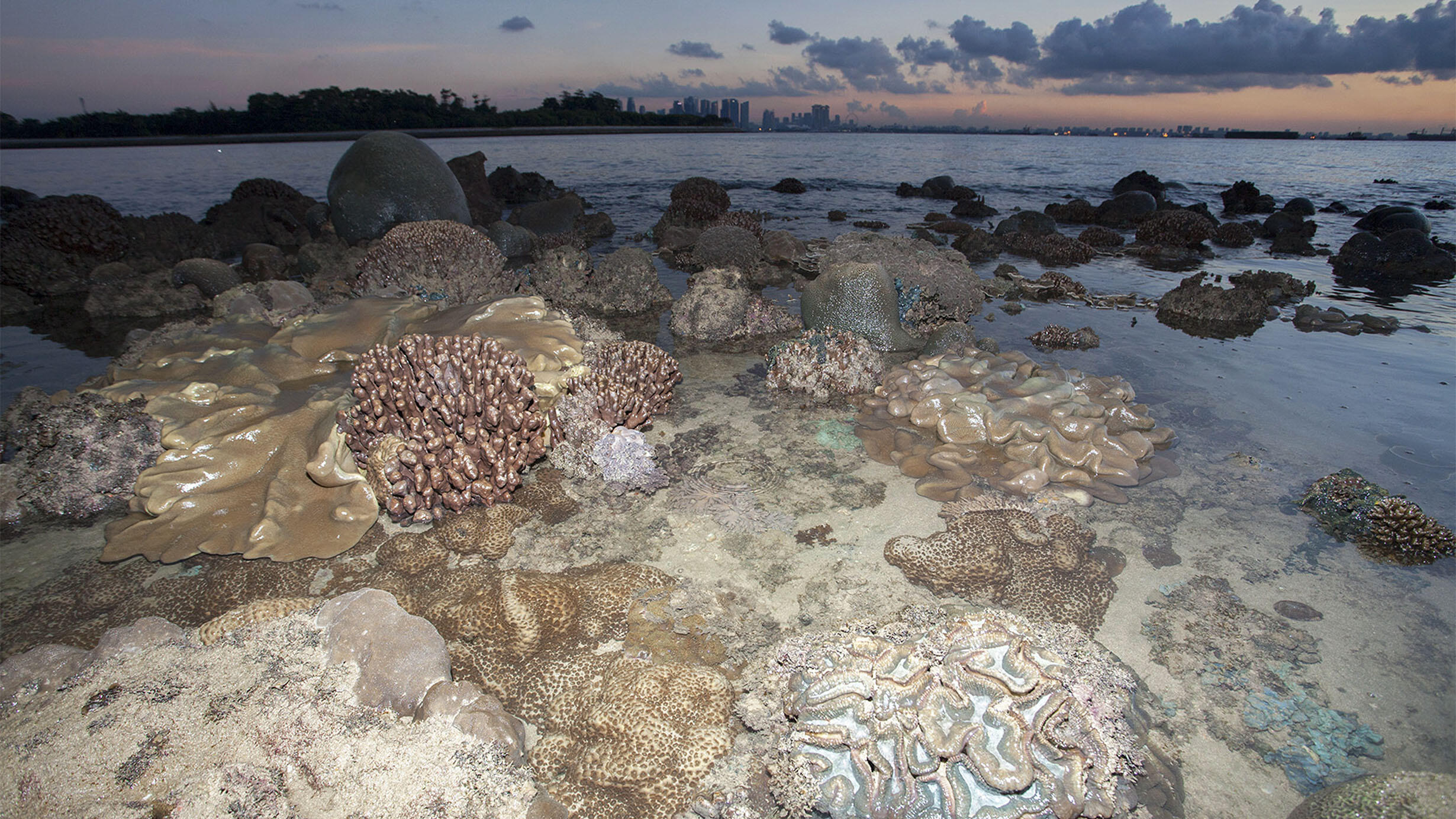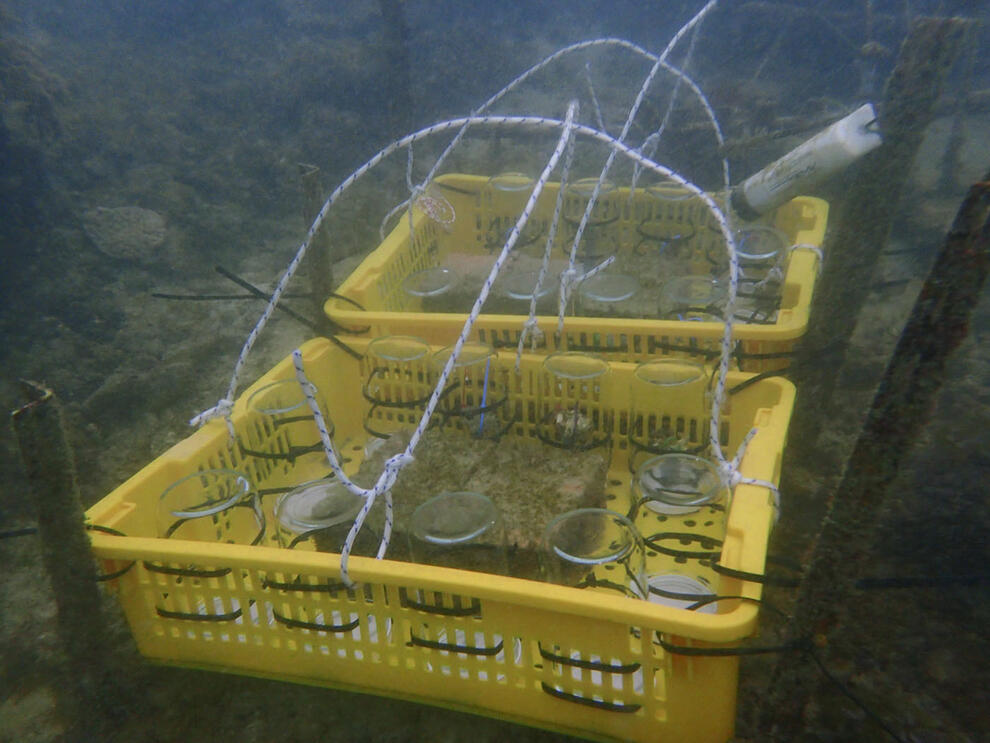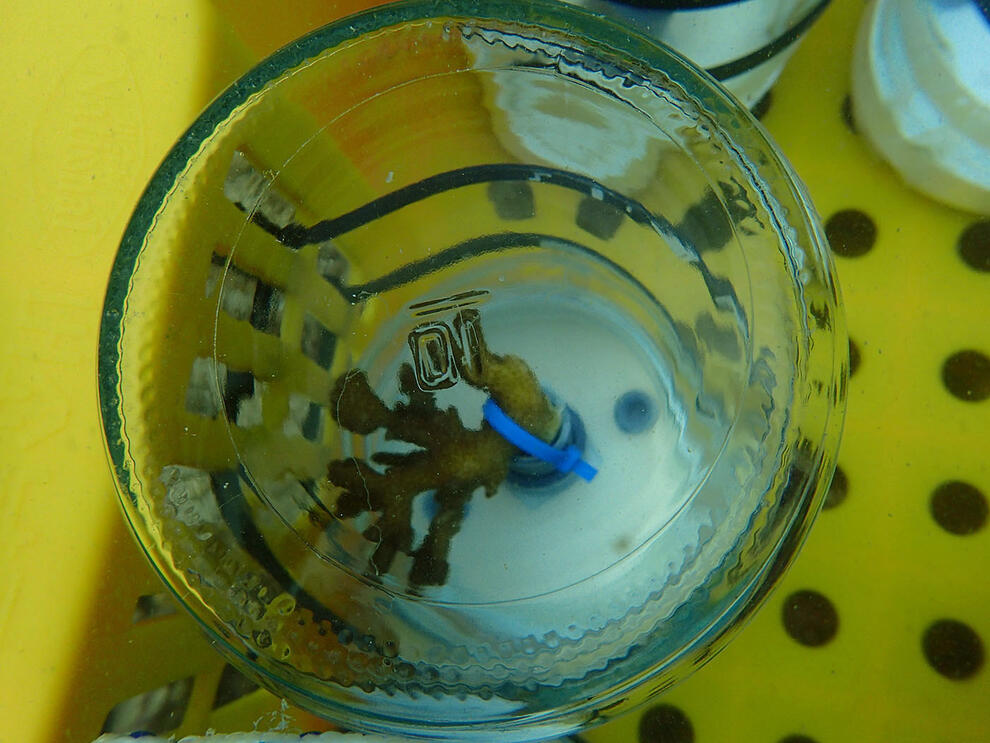Corals Get a Nitrogen Fix from Microbes Even When They Don’t Seem to Need It
by AMNH on
 Coral reefs, including this one on Kusu Island, rely on nitrogen as a nutrient.
Coral reefs, including this one on Kusu Island, rely on nitrogen as a nutrient.Courtesy of Budak/Flickr
A new study led by Museum researchers finds that even when corals have plenty of nitrogen—a nutrient that’s crucial for all life—they continue to get some nitrogen from specialized microbes known as nitrogen “fixers.”
The findings, published recently in The ISME Journal, could help scientists better understand the nitrogen cycle and in particular, how corals balance their nitrogen budget. This question is especially relevant as reefs face increasing pressure from human activity, including sewage and fertilizer runoff, which can increase nitrogen levels on reefs and can even cause coral bleaching.
© M. Chen
About 80 percent of our atmosphere is made up of nitrogen gas, but plants and animals are not able to use nitrogen in that form. Before it can be used to make proteins, DNA, and other important biological building blocks, specialized bacteria and archaea first convert nitrogen gas into a more accessible form through a process called nitrogen fixation.
These microbes essentially eat nitrogen gas and transform it into biologically usable forms, making it available for plants, animals, and other microorganisms. In the new study, Museum Associate Curator Nathalie Goodkin and Molly Moynihan, a former Ph.D.-degree student at Nanyang Technological University in Singapore and currently a postdoc at the Marine Biological Laboratory in Falmouth, Massachussetts, focused on how much nitrogen corals were acquiring from these nitrogen-fixing microbes.
“Typically, in reef waters there’s very little biologically available nitrogen around, making nitrogen the growth-limiting nutrient,” Moynihan said. “In coral reefs, we find many symbiotic relationships, often centered around recycling nitrogen. It’s a really important aspect for maintaining the stability of the whole reef ecosystem.”
Corals get their food—and nitrogen—by capturing and digesting prey or from symbiotic algae living in their tissues. Because nitrogen-fixing microbes could be an additional source of nitrogen for corals, they are thought to play an important role in coral health and physiology. The general expectation is that when dissolved nitrogen levels are low in the water, corals might get more nitrogen from nitrogen-fixing microbes, with the opposite occurring when there is a high level of biologically available nitrogen.
“We wanted to measure this process directly on the reef, which no one has ever done before,” said Moynihan, adding that most measurements have been done in aquariums.
 The study placed incubation chambers directly on the reef to investigate how nitrogen-fixing microbes contribute to the nitrogen balance in corals.
The study placed incubation chambers directly on the reef to investigate how nitrogen-fixing microbes contribute to the nitrogen balance in corals.© M. Moynihan
 Each incubation chamber contained a piece of coral from one of three different species as well as water with nitrogen gas.
Each incubation chamber contained a piece of coral from one of three different species as well as water with nitrogen gas.© M. Moynihan
To do this, Moynihan deployed incubation chambers directly on the reef, which contained pieces of coral from three different species and water with “labeled” nitrogen gas—nitrogen that has a slightly different chemical signature, allowing the researchers to measure its uptake. Fighting strong currents and low visibility, the researchers placed the incubation chambers on two reefs in Singapore for 24 hours during the southwest monsoon, when nitrogen is seasonally elevated.
The scientists found that even during a period with high nitrogen availability, the corals were still getting some nitrogen from nitrogen-fixing microbes. In particular, they found that the majority of fixed nitrogen was in the coral skeleton. The team’s study adds to a growing body of research pointing to the presence of unexpected nitrogen fixation sources, and the potential importance of microbes in coral skeletons.
“In many different marine environments, we are finding that there’s this component of the nitrogen cycle that should shut down in a high-nutrient world but doesn’t,” Goodkin said. “Then the question is: Even if there’s high nitrogen in the water, why is this still happening, and how is it impacting the nitrogen cycle and the environment at large?”